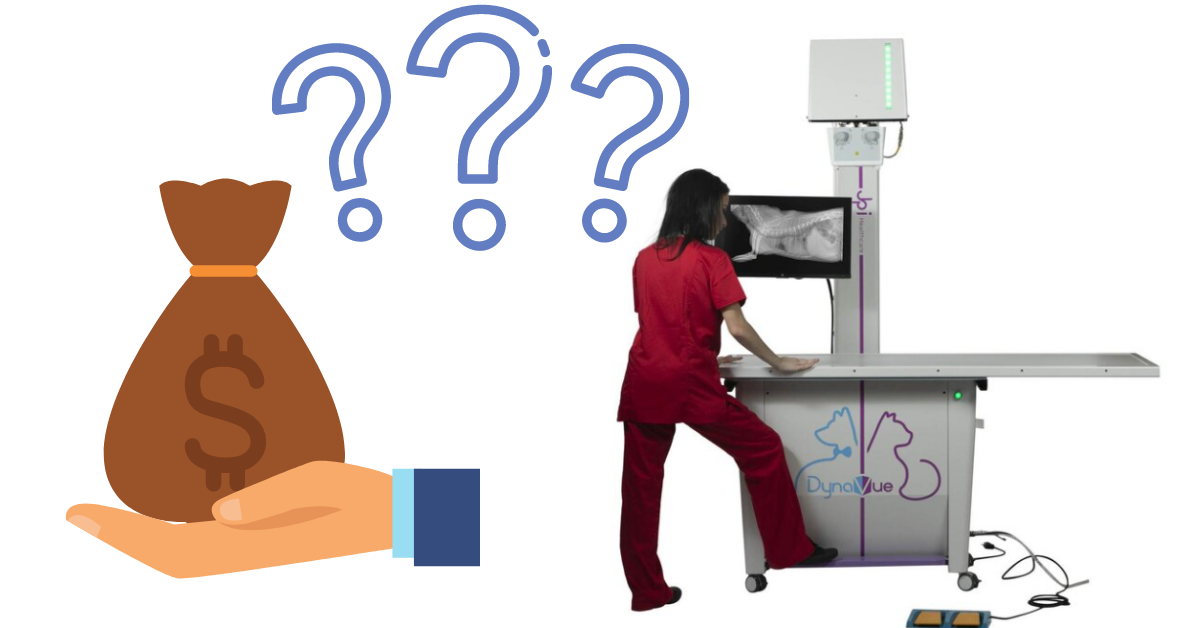How Much Does Veterinary Fluoroscopy Equipment Cost
For many years, when it came to diagnostic imaging modalities in general practice, many veterinarians were limited to film or digital radiographs. Some general practitioners may have had ultrasound available, but for more advanced imaging modalities, patients were referred to specialty hospitals.
Nowadays, general practitioners may have noticed that imaging technology is becoming more widely available. Even looking at digital radiography, machine prices have come down significantly in the last 10 years.
And it’s not unusual for a practice to offer an additional imaging modality such as fluoroscopy or cone-beam CT, along with interventional radiology procedures, in addition to radiography and ultrasound.
Today, we’ll discuss the availability of fluoroscopy, cost considerations, and other factors to consider when investing in a veterinary fluoroscopy unit.
How to Choose a Fluoroscopy System
When shopping for a fluoroscopy unit, veterinarians will find that there are some veterinary-specific machines available, while others were designed for human medicine. Either option could potentially be useful depending on the specific needs of the practice.
It’s important to consider the specific features of the equipment you are purchasing, as there are big differences between some of the machines. It’s not always an “apples to apples” comparison when price shopping.
Some of the factors to consider include…
Which type of fluoroscopy unit is best? A C-arm is what comes to mind for most vets, as that was the primary system available for many years. And C-arms still have their place, especially when used in the surgery suite. But the downsides are that they can be expensive and very bulky. A table unit is another option. Small, mobile units are also available, especially for large animal practitioners, although they may not carry all the capabilities of larger units.
X-ray output/generator. Fluoroscopy generators can be continuous (constant x-ray output during a study) or pulsed (short bursts of x-rays, similar to the frames of a movie reel). As you can probably imagine, pulsed generators tend to have a lower overall output, which is important for radiation safety. However, exposures can still add up over time, so it’s important to practice radiation safety no matter which unit is being used.
What will your practice use fluoroscopy for? If there is a specific need such as fluoroscopy guidance during major surgeries, that may determine the type of unit your practice purchases.
Where in the practice will the unit be used? Consider whether the power supply in the room needs to be redone or if the room itself needs modifications to meet radiation safety guidelines. Also, does the unit physically fit into the room in which it’s intended to be used? A combination unit, such as one that combines fluoroscopy with digital x-ray or CT functions, could help with space savings in the hospital.
Ease of use and technical support. Efficiency in the hospital is important, even more so during busy times. Machines that are difficult or confusing to use could create challenges with effectively schedule fluoroscopy studies. This could lead to less frequent use of the machine, and therefore less of a return on investment.
Cost considerations. Of course, look at the actual purchase cost. But also consider factors such as financing/payment plan options for cash flow, warranty and maintenance (a warranty or service plan might not be an option when purchasing used equipment), and calculating the return on your financial investment. A practice consultant or financial expert can help with these financial projections and decisions.
How Much Do Veterinary Fluoroscopy Machines Cost?
Once a veterinary practice has evaluated their needs, it’s time to start comparing machines that would be a great fit for the practice. So, how much can a veterinarian expect to pay for a fluoroscopy unit?
The price is incredibly variable depending on the type of unit a vet practice is looking for.
Used or refurbished mini C-arm units are available through resellers starting at around $15,000. On the other hand, some new fluoroscopy units can cost well over $100,000.
There are used and new options sold between these price ranges, too.
How Can a Veterinary Practice Maximize the Return on Their Equipment Investment?
No matter which type of equipment a veterinary practice purchases, it’s important to make sure the equipment actually gets used!
Some of the factors above will help ensure the best ROI. For example, ease of use/efficiency and keeping the machine in good working order are both important.
Staff training, appropriate pricing strategies for fluoroscopy studies, and client education on the value of the service can also contribute to ROI.
Keeping all these factors in mind will help promote regular use of the machine—which carries benefits to patient care and practice profitability alike.
Written by: Dr. Tammy Powell, DVM



